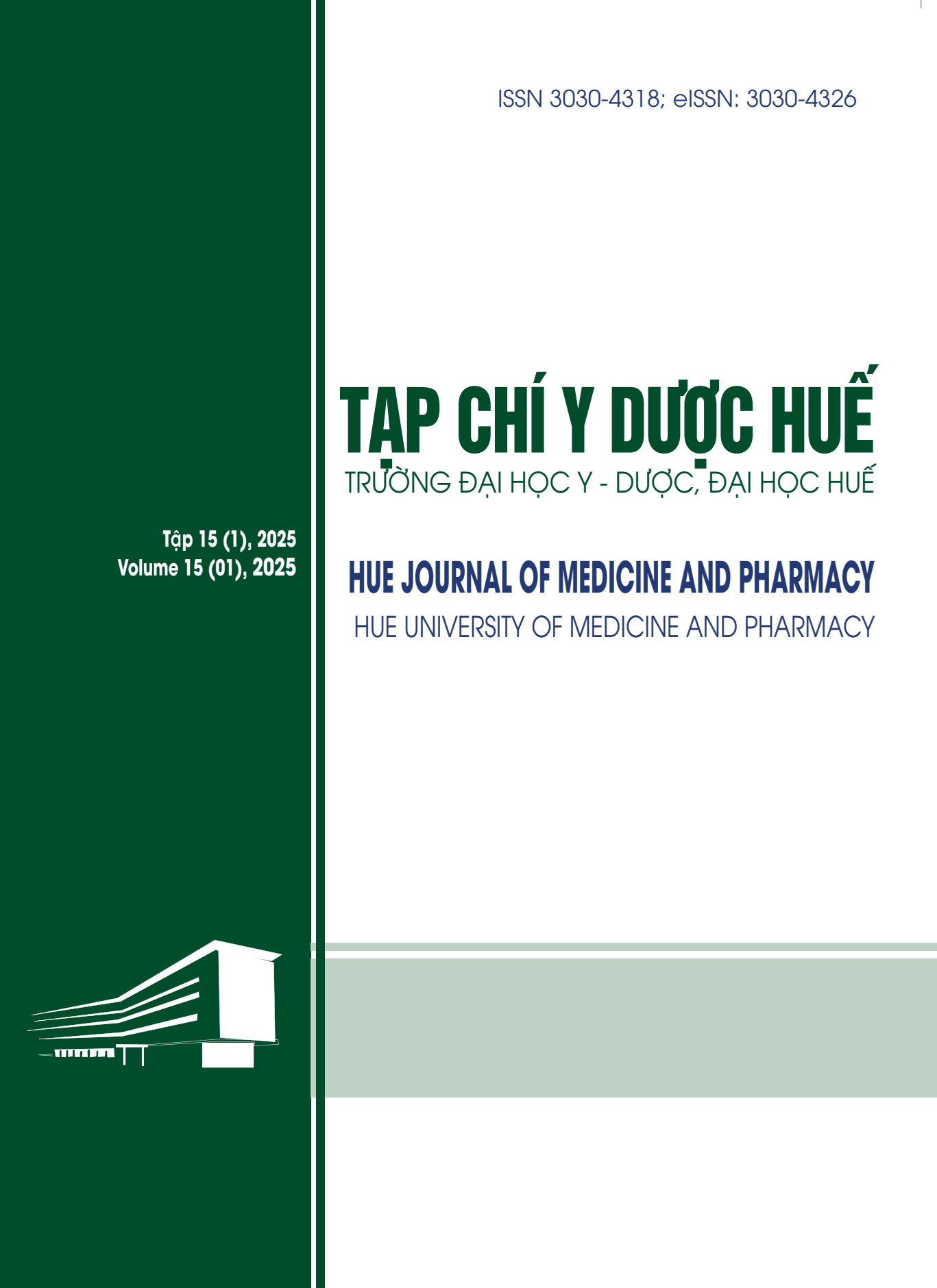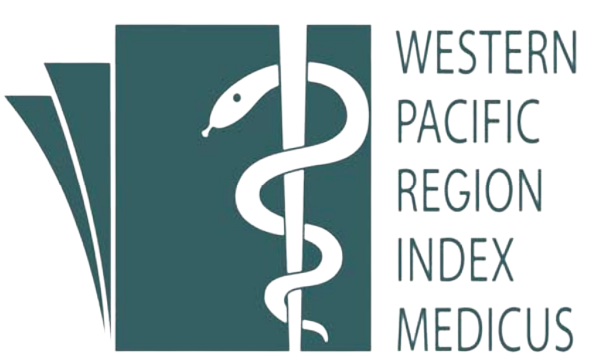Abstract
Background: Self-care plays a crucial role in managing hypertension (HTN). The Hypertension Self- Care Activity Level Effects (H-SCALE) is a comprehensive tool for assessing self-management behaviors in hypertensive patients. However, its validity and reliability have not yet been evaluated in Vietnam.
Objectives: This study aimed to assess the validity and reliability of the H-SCALE in evaluating self-care behaviors among hypertensive patients in primary care.
Methods: A cross-sectional study was conducted with 268 hypertensive patients. The reliability of the scale was assessed using Cronbach’s alpha. Exploratory Factor Analysis (EFA) was performed to determine the factor structure and evaluate convergent validity. Confirmatory Factor Analysis (CFA) was conducted to assess the model’s goodness-of-fit.
Results: The overall Cronbach’s alpha for the scale was 0.68, indicating an acceptable level of reliability. EFA identified five behavioral components: Medication Adherence, Physical Activity, Weight Management, Healthy Diet Compliance, and Smoking-Alcohol Consumption, with a total explained variance of 61.2%. CFA confirmed the five-factor model with good model fit (Chi-square/df = 1.70, p < 0.001, RMSEA = 0.05, GFI = 0.87, TLI = 0.90, CFI = 0.91, PCLOSE = 0.38).
Conclusions: The H-SCALE is a valid and reliable tool for assessing hypertension self-management behaviors in Vietnam. This instrument can assist healthcare providers in monitoring and counseling patients to improve their lifestyle behaviors, ultimately enhancing hypertension control.
| Published | 2025-04-24 | |
| Fulltext |
|
|
| Language |
|
|
| Issue | Vol. 15 No. 1 (2025) | |
| Section | Original Articles | |
| DOI | 10.34071/jmp.2025.1.22 | |
| Keywords | tăng huyết áp, tự chăm sóc bệnh, thang đo H-SCALE, Độ tin cậy và tính giá trị thang đo, chăm sóc ban đầu Hypertension, self-care behaviors, H-SCALE, scale reliability and validity, primary care |

This work is licensed under a Creative Commons Attribution-NonCommercial-NoDerivatives 4.0 International License.
Copyright (c) 2025 Hue Journal of Medicine and Pharmacy
World Health Organization. Hypertension. Accessed April 26, 2023. https://www.who.int/ westernpacific/ health-topics/hypertension.
Slivnick J, Lampert BC. Hypertension and Heart Failure. Heart Fail Clin. 2019 Oct;15(4):531-541. doi: 10.1016/j.hfc.2019.06.007. Epub 2019 Jul 31. PMID: 31472888.
World Health Organization. Non-communicable Diseases Country Profiles 2018.; 2018. https://www. who. int/nmh/publications/ncd-profiles-2018/en/
Minh HV, Huy TV, Long DPP, Tien HA. Highlights of the 2022 Vietnamese Society of Hypertension guidelines for the diagnosis and treatment of arterial hypertension: The collaboration of the Vietnamese Society of Hypertension (VSH) task force with the contribution of the Vietnam National Heart Association (VNHA). The Journal of Clinical Hypertension. 2022, 24(9), pp. 1121-1138.
Aram VC, George LB, Henry RB et al. The seventh report of the joint national committee on prevention, detection, evaluation, and treatment of high blood pressure: the JNC 7 report. Jama. 2003, 289(19), pp. 2560- 2571
Weir MR, Maibach EW, Bakris GL, Black HR. Implications of a health lifestyle and medication analysis for improving hypertension control. Archaelogy of Internal Medicine 2000, 160(4), 481-490.
Weber MA, Schiffrin EL, White WB, Mann S, Lindholm LH, Kenerson JG. Clinical practice guidelines for the management of hypertension in the community: a statement by the American Society of Hypertension and the International Society of Hypertension. Journal of Clinical Hypertension, 2014 16(1), 14-36.
Warren-Findlow J, Seymour RB. Prevalence rates of hypertension self-care activities among African americans. J Natl Med Assoc. 2011;103(6):503-12. https://doi. org/10.1016/s0027-9684(15)30365-5.
Warren-Findlow J, Basalik DW, Dulin M, Tapp H, Kuhn L. Preliminary validation of the Hypertension Self-Care Activity Level effects (H-SCALE) and clinical blood pressure among patients with hypertension. J Clin Hypertens. 2013;15(9):637–43. https://doi.org/10.1111/jch.12157
Shea JA, Fortna GS. Psychometric Methods. International Handbook of Research in Medical Education. Springer International Handbooks of Education, vol 7. Springer, Dordrecht.
Klein G. The Cartoon Introduction to Statistics. Newyork: Hill & Wamg. 2013.
Hu L, Bentler PM. Cutoff criteria for fit indexes in covariance structure analysis: Conventional criteria versus new alternatives. Structural Equation Modeling. 1999:1- 55.
Fornell C, Larcker DF. Evaluating structural equation models with unobservable variables and measurement error. J Mark Res. 1981;18(1):39–50. https://doi. org/10.2307/3151312.
Whelton PK, Carey RM, Aronow WS, Casey DE Jr, Collins KJ, Dennison Himmelfarb C, DePalma SM et al. 2017 ACC/AHA/AAPA/ABC/ACPM/AGS/APhA/ ASH/ASPC/NMA/PCNA Guideline for the Prevention, Detection, Evaluation, and Management of High Blood Pressure in Adults: Executive Summary: A Report of the American College of Cardiology/American Heart Association Task Force on Clinical Practice Guidelines. Hypertension. 2018 Jun;71(6):1269-1324. doi: 10.1161/ HYP.0000000000000066. Epub 2017 Nov 13.
Appel LJ, Moore TJ, Obarzanek E, et al. DASH Collaborative Research Group. A clinical trial of the effects of dietary patterns on blood pressure. N Engl J Med 1997;336:1117–24
Sacks FM, Svetkey LP, Vollmer WM, et al. DASH-Sodium Collaborative Research Group. Effects on blood pressure of reduced dietary sodium and the Dietary Approaches to Stop Hypertension (DASH) diet. N Engl J Med 2001;344:3-10.
Van Horn L, Carson JAS, Appel LJ, et al. American Heart Association Nutrition Committee of the Council on Lifestyle and Cardiometabolic Health; Council on Cardiovascular Disease in the Young; Council on Cardiovascular and Stroke Nursing; Council on Clinical Cardiology; and Stroke Council. Recommended dietary pattern to achieve adherence to the American Heart Association/American College of Cardiology (AHA/ACC) Guidelines: a scientific statement from the American Heart Association [Published correction appears in: Circulation 2016;134:e534]. Circulation 2016;134:e505– e529.27789558
Huai P, Xun H, Reilly KH, Wang Y, Ma W, Xi B. Physical activity and risk of hypertension: a meta-analysis of prospective cohort studies. Hypertension 2013;62:1021–6.
Warren-Findlow J, Coffman MJ, Karp CA. Translation and pilot testing of a measure to assess hypertension self-care activities among Hispanics. Ethn Health. 2018;23(4):397–409.
Shabani M, Taheri-Kharameh Z, Sheikholeslamikabiri F et al. Translation and evaluation of psychometric properties of the Persian version of the Hypertension Self-Care Activity Level Effects (H-SCALE). BMC Cardiovasc Disord 2023 23, 422. https://doi.org/10.1186/s12872- 023-03460-z
Chen TY, Kao CW, Cheng SM et al. Translation, adaptation, and validation of a Chinese version of the Hypertension Self-Care Activity Level effects (H-SCALE) for patients with hypertension. BMC Nurs 23, 334 (2024). https://doi.org/10.1186/s12912-024-01993-y






